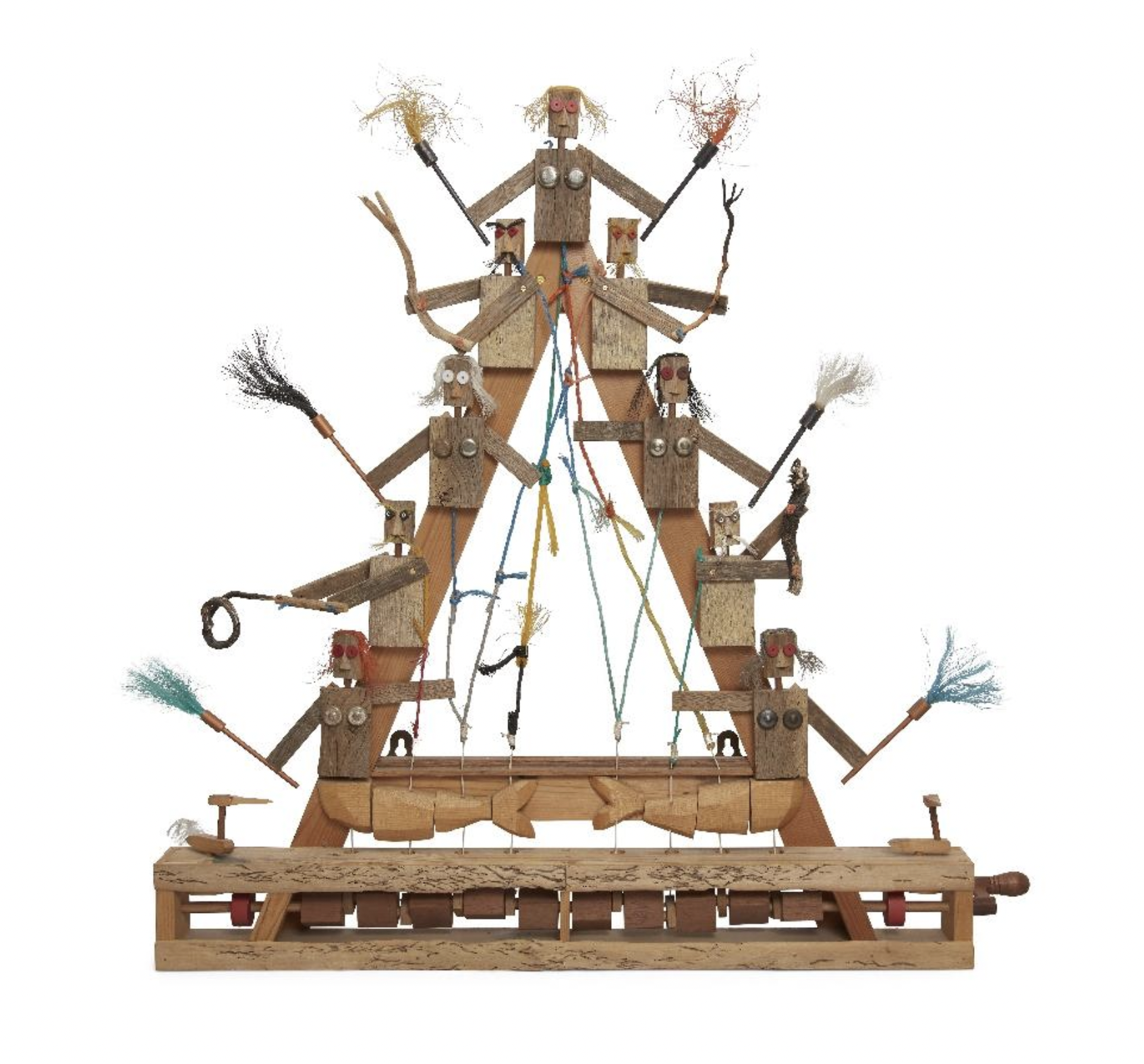What is the history of automata?
Automata are moving figures, tableaux or sculptures powered by electricity, clockwork, water, wind, gravity or hand turned. They have entertained and inspired awe in their audiences for thousands of years. The first recorded automata were made in Egypt in 200-300BC and by the 15th and 16th century, Renaissance gardens came to life with hydraulic automata. Life-like mechanical creatures and toys become a craze with wealthy Europeans in the 17th century but the golden age of automata occurred in the Victorian era with ingenious designs by mechanical toy makers, particularly in France and Germany. Today automata continue to fascinate and have emerged as a modern form of art.
Lot 121: Neil Hardy, Myopic Frog, a hand-operated automaton
Why do people collect automata?
Automata appeal to a range of audiences, from those who marvel in the technical skill of the makers to collectors who delight in the cheerful and quirky nature of the works of art. There is a huge variety of automata in terms of size, sophistication and price making them a diverse collecting field to display and enjoy.
Lot 91: The Sir Nicholas Goodison Collection of Automata & Moving Toys
Is there anything I should look out for as a buyer?
Always check the condition of any automata you are considering purchasing. Is it in working order or does it need specialist attention to restore any faulty parts? Buy pieces which give you pleasure now. With their ingenious design and witty characteristics, the examples in the Sir Nicholas Collection give a valuable snapshot into one key aspect of the history of toy making and will entertain both adults and children.
Lot 118: Peter Markey, 1930-2016, Cow
What makers should I look out for in the upcoming Fine & Decorative sale?
Leading the sale are pieces by key figures who were central to the renaissance of automata making in the UK such as Peter Markey, Tony Mann, Robert Race, Keith Newstead and Ron Fuller. These mechanically minded artists share a delight in the absurd and the ridiculous, creating toys which occupy the strange, shifting ground between folk art, kinetic sculpture, toy-making, satire and mechanics.
Lot 103: Robert Race, b. 1943, Chesil String, a hand-wound automaton
What highlights are included in the Roseberys sale?
This cheerful and quirky collection is a unique opportunity to purchase an automaton or moving toy from a renowned collector. Highlights include, lot 94, Pyramid of Power by Tony Mann, £400-600; lot 101, It’s a Ducks Life by Robert Race - £180-200; lot 118, Peter Markey’s Cow and Eight Maids a-milking - £150-250.








